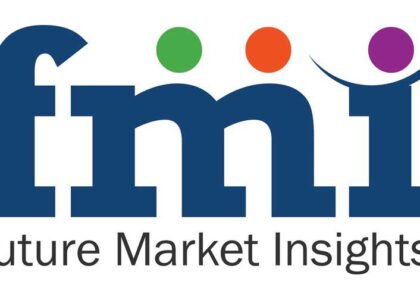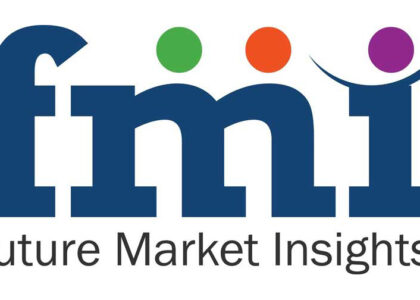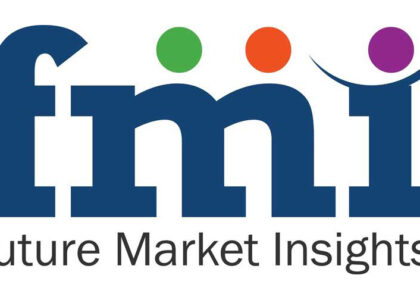The global ripeness indicator labels market is on track for impressive growth over the next decade, according to Future Market Insights. Starting with a valuation of USD 3.3 million in 2023, the market is projected to expand at a robust CAGR of 5.7%, reaching approximately USD 6.0 million by 2033. This growth is largely driven by the escalating demand for innovative packaging solutions aimed at reducing food waste and enhancing product quality for consumers.
A closer look at regional performance shows that the top three countries are expected to account for approximately 15%-20% of the market in 2023, showcasing substantial regional influence in the adoption of ripeness indicator labels.
The paper segment, defined by its eco-friendly appeal and functionality, leads the market by material type and is anticipated to grow at a CAGR of 5.3% from 2023 to 2033. This segment’s growth reflects an increasing preference for sustainable packaging materials that align with environmental regulations and consumer expectations.
The market’s upward trend aligns with FMI’s forecast, which highlights a USD 2.6 million growth opportunity over the forecast period. The demand for ripeness indicator labels is expected to increase 1.7 times from its current value, emphasizing the significant role that smart packaging solutions are playing in the global fight against food loss.
“Ripeness indicator labels are set to redefine freshness standards in food packaging,” stated a representative from Future Market Insights. “Their ability to effectively communicate the ripeness stage of produce provides consumers with valuable information, helping to minimize waste and maximize product quality.”
By displaying crucial information on fruit packaging, such as ripeness indicators, consumers and importers can make informed choices about the quality and freshness of the produce. This not only ensures consumer satisfaction but also contributes to boosting the local and international fruit trade. Particularly in the face of economic challenges brought about by global pandemics, these labels can play a pivotal role in stabilizing and rejuvenating China’s economy.
China’s substantial influence on the ripeness indicator labels market is undeniable. As it leverages these labels to improve the import and distribution of fruits, the country is poised to play a central role in increasing the market value and global adoption of ripeness indicator labels, transforming the way fresh produce is traded and consumed.
Over time, the idea of ripeness indicator labels has undergone significant change. At first, simple color-changing stickers were employed to gauge how ripe fruits and vegetables were. However, the Ripeness Indicator Labels Market expanded quickly as a result of technological developments and consumer requests for more precise information. These labels now make use of advanced sensors, nanotechnology, and intelligent packaging techniques to deliver accurate and immediate data on the freshness of products.
The Significance of Ripeness Indicator Labels
- Ensuring Quality Control: Ripeness Indicator Labels enable farmers, distributors, and retailers to monitor and maintain the quality of perishable products throughout the supply chain. By indicating the optimal ripeness stage, these labels reduce the risk of overripe or underripe products reaching the market.
- Minimizing Food Waste: Accurate ripeness assessment helps prevent unnecessary food waste. By providing consumers with clear indicators of freshness, these labels empower them to choose the right products and reduce the likelihood of purchasing items that may spoil quickly.
- Enhancing Consumer Experience: Ripeness Indicator Labels improve the overall consumer experience by ensuring that they receive products at their desired ripeness level. This leads to higher satisfaction and repeat purchases, fostering brand loyalty for businesses.
Competitive Landscape
The key players manufacturing ripeness indicator labels are trying to focus on innovation by launching new products along with adopting the advancement in technology to cater to the demand. Also, the players are expanding their production capacity to meet the demand for smart, connected, and interactive packaging across the globe.
As it’s a new innovation in the market companies have scope to enter & increase the sales of ripeness indicator labels.
Access Full Report: https://www.futuremarketinsights.com/reports/ripeness-indicator-labels-market
Ripeness Indicator Labels Market by Category
By Material Type
- Paper
- Plastic
By Thickness
- Less than 40 microns
- 40 to 100 microns
- 100-150 microns
- Above 150 microns
By Printing Technology Type
- Digital printing
- Flexographic printing
- Offset printing
- Others
By Region
- North America
- Latin America
- East Asia
- South Asia & Pacific
- Western Europe
About Future Market Insights (FMI)
Future Market Insights, Inc. (ESOMAR certified, recipient of the Stevie Award, and a member of the Greater New York Chamber of Commerce) offers profound insights into the driving factors that are boosting demand in the market. FMI stands as the leading global provider of market intelligence, advisory services, consulting, and events for the Packaging, Food and Beverage, Consumer, Technology, Healthcare, Industrial, and Chemicals markets. With a vast team of over 400 analysts worldwide, FMI provides global, regional, and local expertise on diverse domains and industry trends across more than 110 countries.
Join us as we commemorate 10 years of delivering trusted market insights. Reflecting on a decade of achievements, we continue to lead with integrity, innovation, and expertise.
Contact Us:
Future Market Insights Inc.
Christiana Corporate, 200 Continental Drive,
Suite 401, Newark, Delaware – 19713, USA
T: +1-347-918-3531
For Sales Enquiries: sales@futuremarketinsights.com
Website: https://www.futuremarketinsights.com
LinkedIn| Twitter| Blogs | YouTube




